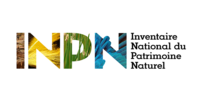Partners of the INPN
What is the SINP?
Nature and Landscape Information System
SINP is a collaborative organisation that promotes synergy between stakeholders in the production, management, processing, use and dissemination of biodiversity data.
The SINP facilitates the pooling of information while providing a methodological reference framework. It is designed as a mechanism for pooling resources, methods and data (collaborative working methods - interoperability). Where necessary, it facilitates the introduction of common tools and operating rules. It is also a platform for promoting the products of the data producers who join it.
What is GBIF?
Global Biodiversity Information Facility.
The GBIF, an international consortium founded on the initiative of the OECD, is a programme that aims to bring together all this data and make it available to researchers and the general public. In this way, biodiversity will be better known, better studied and better used. The collections will also be more visible and better promoted, and the regions better known. Finally, it will be easier for researchers studying biodiversity to prepare their research, compare it and relate it to previous work.
In January 2018, GBIF was already making more than 950 million items of data, specimens from collections and observations in the wild, available to the public online.
What is the INPN?
National Inventory of Natural Heritage
TheNational Inventory of Natural Heritage (INPN) is a French organisation that has been part of the National Museum of Natural History since 2002. It manages and disseminates online information on the natural heritage on land and in the sea (current and ancient animal, fungal and microbial plant species, natural habitats, protected areas and geology) in mainland France and overseas.
New data from the naturalist inventory is provided by the Museum's researchers and their many partners. The Museum organises the management, validation and dissemination of this inventory, which is the culmination of a long process involving scientists, local authorities, naturalists and nature conservation associations, with the aim of producing a regularly updated summary of France's natural heritage. BeesForLife is now part of this collection network.
Qu'est-ce que le MnHn ?
Museum national d'Histoire naturelle
Le Muséum national d'Histoire naturelle est un établissement français d'enseignement, de recherche et de diffusion de la culture scientifique naturaliste. Fondé en 1793 en continuité du Jardin royal des plantes médicinales créé en 1626, c'est l'un des plus anciens établissements mondiaux de ce type
Cinq missions pour connaître et préserver la nature
La prise de conscience environnementale et la sauvegarde de la planète sont au cœur des débats contemporains. Totalement engagé sur ces questions, le Muséum occupe une position de référence grâce à des missions variées : la recherche fondamentale et appliquée, la conservation et l’enrichissement des collections, l’enseignement, l’expertise et la diffusion des connaissances.
Centre de recherche, le Muséum s’appuie sur des travaux en laboratoire et des expéditions dans le monde entier, un grand éventail de disciplines, des collections exceptionnelles et une expertise reconnue. A travers l’enseignement ou les actions de diffusion, il a également pour mission de partager ses savoirs. Avec un objectif clair : rendre les connaissances sur la nature accessibles à tous et sensibiliser le plus grand nombre à la protection de notre planète.




